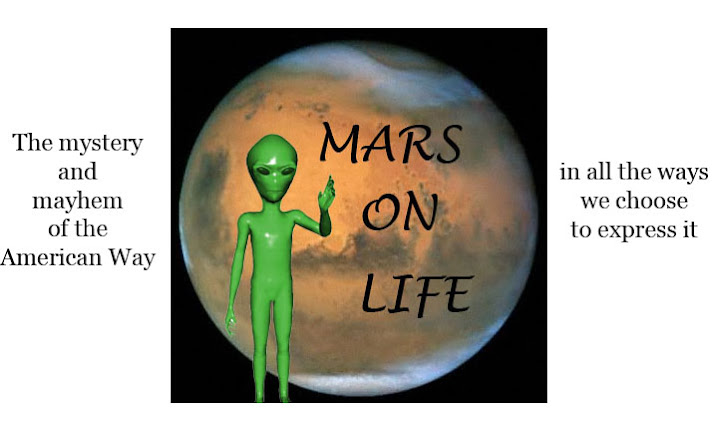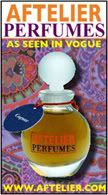It's hard to be Mary Kate Olsen. A lot of pressure is attached to being inspirational, even if that inspiration comes not from inner poetry or inherent grace but from a scraggly head of hair. You'd expect to see that type of hip mess from radical designers, but not from Chanel. Amy Winehouse--a junkie Terpsichore--is alleged to have been the most recent inspiration for that venerable institution, but it was Ms. Olsen's hair that became the accidental muse for fall.
Hipness is very complex. If you think you can explain it in less than a dissertation then you are its polar opposite and you have never lived in Seattle or San Francisco. Trying to unscramble the puzzle of cool is like trying to decode the biological basis of consciousness.
Remember when Catherine Deneuve was muse to St. Laurent? That was a perfectly reasonable relationship; who didn't aspire to look like the Venus of French cinema? Even Lagerfeld's old muse, Claudia Schiffer, had similar selling points. But that was then, and now we take our muses where we can find them, raw from rehab clinics and the front pages of tabloids. Who has the last word in skid row chic? We like 'em anorexic, addled, and addicted. Our bedraggled fashion muses may be the visual equivalent of a bottle of Thunderbird, but this is completely defensible. Great art has come out of cheap wine and malignant culture. Punk rock, anyone? Trust me, we shouldn't have it any other way. If Mr. Lagerfeld wants to turn Mary Kate Olsen's unkempt hair into an aesthetic lobby, then we should stand up and let our vote be counted. Take a look in the mirror. Art always reflects both our best and our worst selves.
Mary Kate Olsen's messy mane was a subordinate clause of the Chanel Fall 2008 ready-to-wear collection. That collection was once again Chanel for the demoiselle, even if she appears to have aged slightly since the Spring 2008 outing. Chanel is a booby trap of a house where a designer must appeal to a clientele that ranges in age from 16 to 96. A designer must also never divorce himself from the weight of history while simultaneously keeping the biography current. The potential for polite calamity is what makes Lagerfeld so interesting to watch.
The primary aim of Chanel will always be keeping that golden bullet of a jacket as a principal weapon in the modern fashion arsenal; that is, to convince us that it is truly new and improved. This, you may intuit, is a cheat: A Chanel jacket is not software or an iPod or a missile guidance system. It may take a different silhouette, but functionally it is exactly the same. This time, Lagerfeld took two approaches in the name of innovation. In the first, he pulled in the waist and lengthened the bottom into a soft bell that was repeated in the sleeves. This was a mature treatment that caused the adolescent-looking models to appear as if they were engulfed in their mothers' St. John suits. What this means is that the suits were eminently wearable by society matrons and other such fabulous beasts. The second was a more traditional look at the classic shape, but with an interesting comment on reckless wealth. Only the very rich, Lagerfeld seemed to be saying, can slash wounds in their tweeds. Only they can get away with the type of affluenza in which luxury means so little that they can deface it on a whim; like burning hundred dollar bills and crashing Ferraris the point is not that you are rich enough to own the item, but that you are rich enough to treat it like waste.
The observer is complicit in this endgame, because it is he who allows himself the power to be shocked. Take away his response and the item returns to being a mere status symbol. It's a self-perpetuating cycle in which both parties require the full participation of the other.
The setting for this semiotic exercise was an oval wafer of a stage, in the center of which sat a working carousel. The carousel was decorated with those instantly recognizable tokens that make Chanel such a brand powerhouse: camellias, a pearl bracelet, a handbag, earrings, a hat, Chanel No. 5, and a ballet flat made into a sports car by perching it on wheels. It was a not-so-subtle reminder that accessories are the bread and butter of the couture houses.
Lagerfeld played with a tongued hemline this season. The curved outline wasn't as evocative in satin as it was in  the thickness of a ribbed wool dress, where the heavier texture gave the garment the slab-like appearance of a radiation blanket. That shape also appeared--with little spatial logic--in tunics worn over long slit skirts and in a short-sleeved shift dress.
the thickness of a ribbed wool dress, where the heavier texture gave the garment the slab-like appearance of a radiation blanket. That shape also appeared--with little spatial logic--in tunics worn over long slit skirts and in a short-sleeved shift dress.
Since there is no such thing as true extremism at Chanel, the most daring ensemble was an evening duet that looked as if it belonged in the retro boudoir. Here, what appeared to be a Gay Nineties underpinning was topped by the sweep of a '50s peignoir. This one link to lacy eroticism was a reminder that no matter the era, Chanel is not just a house built on a foundation of smartly tailored day wear.
This collection also proved that Lagerfeld well understands the concept of how to transfer a signature away from a logo without undermining the impact of the brand.
For whatever reason, the models were made up to look drained. While this may have been another shrug at industry, it was hardly a sign of health. Neither is chromatically inexcusable acid-lemon eye shadow. But these are the petty condemnations of the middle class. Even Ms. Olsen, eyes concealed behind a giant pair of sunglasses, can see that.
Images: TFS
Monday, March 3, 2008
Paris Fashion Week: Chanel's Accidental Muse
Subscribe to:
Post Comments (Atom)









10 comments:
Lagerfeld is really quite a clever 'latcher-on' what with his various muses/clothes hangers... Lily Allen, Emma Watson, Olsens etc.... it's sort of scary but a clever strategy on his part...
I am in love with the carousel. Though I bet the carousel would pay for another 70 pieces of WendyB jewelry plus a retail store to show it off in.
"A Chanel jacket is not software or an iPod or a missile guidance system." Lovely turn of phrase.
To be perfectly crude, people want to look fucked up without being fucked up, in the same way they want character neighbourhoods without any immigrants, or bleeding wrist poetry without the suicide.
Thomas, right on!
Where is Iggy Pop when we need him?
I've long underestimated the power of the hippie muse...But I think MK is a different kind of hippy. =) She is the most sublime muse out there. I appreciate your analysis of the jacket...All in all though, I have to say I did not like this collection. I was disappointed, it was much too muted - In a bad way...
I love Thomas's comment.
BTW - Did you ever notice how Roitfeld looks exactly like Iggy Pop???!!!!!!!
Oh and i'll finally have reviews of Paris...
xx
Iggy's tired of looking good.
I like Lagerfeld's work, but I'm not fond of the Olsen twins—I can't figure out the appeal there. Amy Winehouse leaves me cold, straight down the line. But who can say what or who is a valid muse? If I continue to like Lagerfeld's work, despite who his muses are, then my stance is no longer staunch.
Riz, there was a lot I didn't like in this collection, that peignoir among them. I did like the banded dresses that caught some flack elsewhere.
Thomas is da bombas.
enc, I don't care for Winehouse either. I can't stand looking at her older pics, back when she looked "normal." Except who's to say what is normal and what is not? She's much more appreciated and rewarded the way she is now.
I remember a few years ago (it was only 2000, but in fashion terms that is probably as far away as the Middle Ages), John Galiano stated he was inspired by the French homeless and Diane Arbus' photographs of the mentally ill. This was when he paraded models down the runway in torn newspaper leggings and instructed them to pose in such a way that they "looked" as if they were the starved.
Mary Kate has got the unfed, unkempt, unwell look down pat. And she can actually afford it, too.
I love the point you make about Lagerfeld's proposition that only the truly wealthy can afford to disregard their clothes. I sensed this with the frayed elbows at Chanel and think the Mary Kate and Amy Winehouse references are a clever reiteration of the theme. It's enormously appealing to imagine oneself jumping impulsively into a pool in a couture gown (you know what I mean: having the wealth to do so)...and that in turn encourages the masses to spend on the bread & butter perfume and accessories.
I'm not an Olsen fan, but I'm with Susie- the man is a bit of a pop culture grabber..which works, of course..
Post a Comment